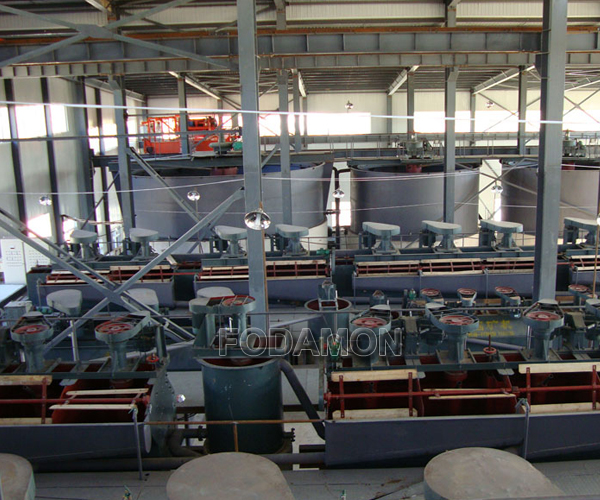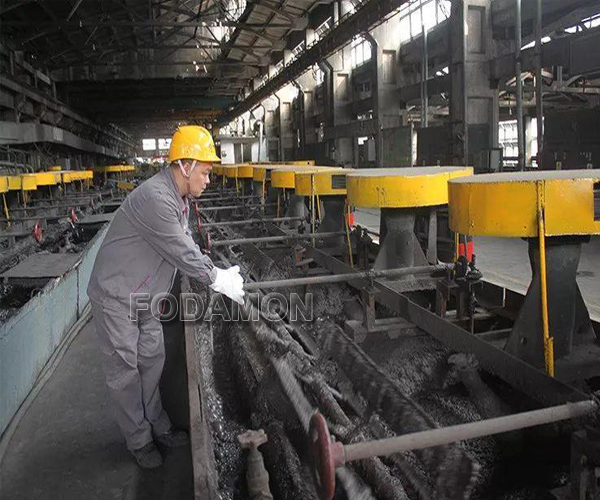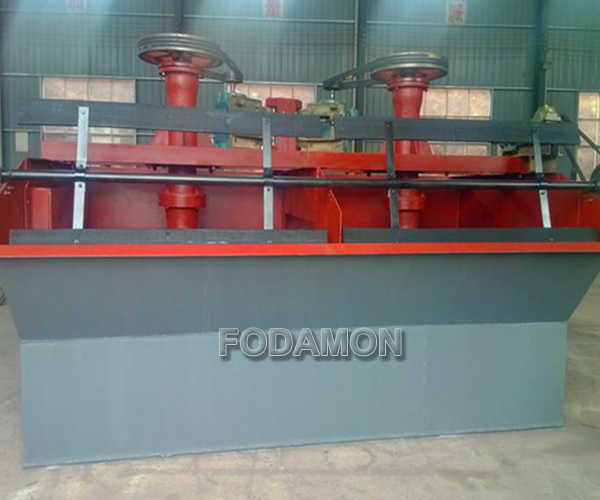Today, Fodamon engineers continue to describe the knowledge of flotation in this chapters.
- What is preferential flotation? Mixed flotation? Partial mixed flotation and other floatable processes?

In the flotation of polymetallic ores containing two or more useful components, the main problem is to solve the sequence of recovering various useful minerals. If one mineral is floated to inhibit the rest, and then another mineral is activated and floated, the process of recovering useful minerals in turn is called preferential flotation process. For example, the principle of preferential flotation of copper zinc ore is to float copper and then zinc in sequence according to the floatability of minerals. In the above case, first float two or more useful minerals in the ore together to obtain mixed concentrate, and then sort the mixed concentrate to obtain qualified concentrate of different useful minerals. This process of mixing and recovering a variety of useful minerals first, It is called mixed flotation process, also known as full flotation process. For example, the mixed flotation process of copper zinc ore is to float all copper and zinc to obtain mixed concentrate and waste tailings. The mixed concentrate is reground or de medicated, and then the copper is preferentially floated to obtain the copper concentrate. Generally speaking, the mixed flotation is suitable for processing the ore with poor raw ore and simple nature. In this case, the preferred flotation has the following advantages: it can save the grinding cost, flotation reagent and flotation equipment. When more than three kinds of useful minerals are recovered, partial mixed flotation process can also be applied.

The equal flotation process is also called separate mixed flotation process. It is to divide the useful minerals to be floated into two parts: easy to float and difficult to float according to different floatability, float them respectively according to the order of easy first and then difficult, and then separate them. It is suitable for complex polymetallic ores with the same mineral, including easy flotation and difficult flotation. Its advantage is that it can reduce reagent consumption, eliminate the influence of excess reagent on separation flotation, and improve flotation index. The main disadvantage is that more equipment is used than full flotation.

- What are the treatment methods of middling?
In flotation process, selected tailings or swept foam products are commonly referred to as middling. Generally, the middling grade is lower than the concentrate grade and higher than the raw ore, and its floatability is also lower than the concentrate and higher than the tailings. For the treatment of middling, we should first analyze the situation of conjoint in middling, study the floatability of middling and the requirements for the quality of concentrate, and then decide the treatment method of middling. Whether the middling treatment method is appropriate or not has a great impact on improving the beneficiation index. The more common methods are as follows:

(1) Return the middling to the appropriate location in front of the flotation
If the useful mineral in the middling has been basically separated from the monomer, return it to the appropriate place in front of the flotation. There are two methods: 1) sequential return, that is, the medium ore obtained from the later operation returns to the previous operation in turn. When the floatability of useful minerals is poor, in order to reduce the metal loss of return and reselection and ensure the recovery rate, the reselection times of middling should be reduced, and sequential return should be used for middling treatment. 2) Integrated return, that is, all middlings are combined and returned to the proper operation in front of flotation. When the floatability of the medium ore is good and the concentrate quality is required to be high, the medium ore should be returned in one. The concentrate quality can be improved because the middling has been cleaned for many times.
(2) Middlings are returned to grinding and classification cycle
When there are many middle ore conjoined bodies, it is better to return to grinding and classification cycle. If the middle ore contains ore particles separated from some conjoined bodies and some monomers, it can be returned to classification operation. In order to increase the mechanical scrubbing of middling surface, it can also be returned to the mill.
(3) Separate treatment of middling
When the properties of middling are complex, such as complex embedding, the floatability is very different from that of raw ore, and there is more slime, if the middling is returned to the original flotation cycle, the whole flotation process is bound to deteriorate. In this case, the middling should be treated separately.
(4) Other methods
If the above methods can not get good results in the treatment of middling, chemical methods can be considered. However, it is necessary to carry out experimental research on the middling mine. According to the test results, a comprehensive comparison of technical and economic indicators should be made for the schemes used. Only the schemes that are technically reasonable and economically cost-effective can have the value of being adopted.
In short, in the process of flotation, the middling treatment method should be carefully studied and a reasonable scheme should be selected, which is of great significance to improve the beneficiation index. As a general principle, the middling should be returned to the operation with similar grade. If the medium ore concentration is too low or the drug content is too large, which affects the normality of return operation, it shall be returned after dehydration and drug removal.
